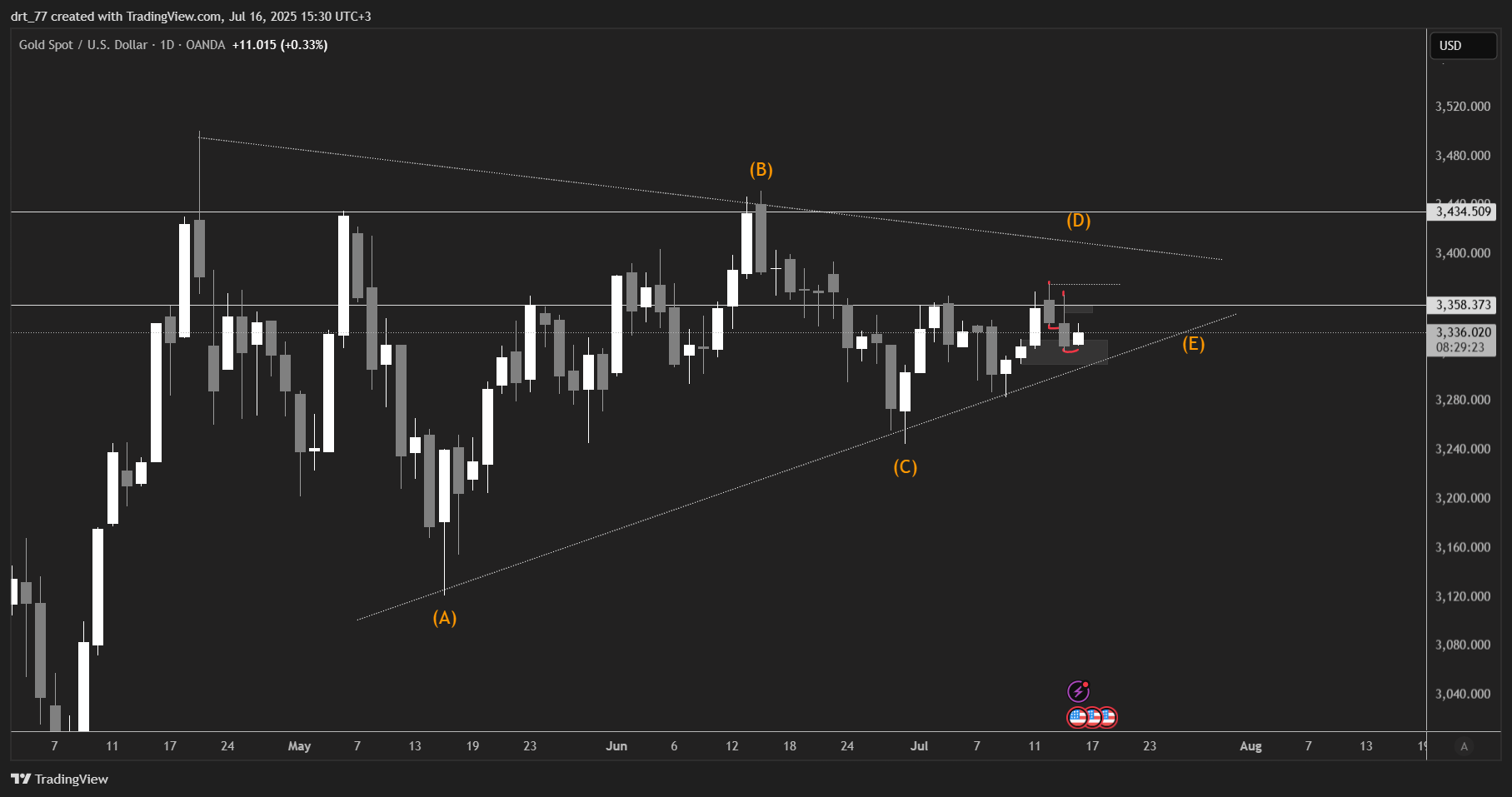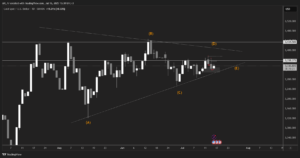US indices face sharp losses, and US30 loses all of its 2023 gains.
US indices closed sharply lower in Tuesday’s session, pressured by the growing investor sentiment that the Federal Reserve will keep interest rates high for a more extended period after data showed a recovery in business activity in the United States in February.
The S&P Global Purchasing Manufacturer Index returned to expansion for the first time in 8 months after recording 50.2 points in February, up from 46.8 in January.
The Dow Jones index fell by about 700 points, or 2.06%, to 33,129 points in the first session of this week, recording its most considerable daily loss since last December 15, to lose all the gains of 2023. The index also closed below the 50-day moving average of 33,620 points.
All sectors of the index declined, without exception, due to a semi-collective decline in stocks, led by Apple, Walt Disney, and Home Depot by 2%, 3%, and 7%, respectively.
The Nasdaq Composite Index fell by 2.5% in Tuesday’s session, closing at 11,492 points. The index recorded its largest daily loss in more than two months and closed at its lowest level since the beginning of this February. However, the index, unlike the Dow Jones, was able to stay up by 10% since the beginning of this year, and it was also able to close above the 50- and 200-day moving averages.
Home Depot stock fell by more than 7% in the Tuesday session, topping the list of losers in the Dow Jones index. The stock ended the session at its lowest level in about three months. The home improvement company had warned of weak demand and issued disappointing forecasts for its profits in 2023.
The dollar and the pound surged high, supported by corporate activity reports.
The US dollar and the British pound found support on Wednesday, February 22, after a sudden revival in corporate activity in the US and UK. The vital data raised the possibility that both countries’ central banks would continue to raise interest rates.
The euro pared back some losses from the previous session even after the Eurozone PMI rose to a 9-month high of 52.3 in February, supported by surprisingly strong growth in the services sector. Data released on Tuesday showed business activity in the United States unexpectedly rebounded in February, hitting an eight-month high and crossing the 50 mark separating growth from contraction for the first time since July.
The US dollar rose broadly while the Sterling last traded at $1.21015, retaining most of yesterday’s 0.6% gains. The euro rose 0.05% to $1.0652 after falling 0.36% in the previous session.
The New Zealand dollar was last up 0.1% at $0.62195, having climbed to a session high of $0.6248 earlier after the New Zealand central bank raised interest rates.
Against the Japanese yen, the dollar declined slightly to 134.91 yen after hitting a two-month high of 135.23 yen in the previous session.
RBNZ raises interest rates to 4.75%.
In a hawkish move that sparked the local currency soaring, the central bank of New Zealand increased interest rates by 50 basis points. Rates have surpassed their 14-year high, to 4.75% on Wednesday. RBNZ also stated that it plans to keep tightening its monetary policy as long as inflation stays excessively high.
Despite the signs indicating that price pressure is easing, core consumer price inflation is still too high, employment is above the highest sustainable level, and near-term inflation forecasts are still elevated.
Oil is stable as investors await the US Federal Reserve report.
Oil prices stabilized on Wednesday (February 22) as investors awaited the US Federal Reserve’s comments on economic data indicating a possible increase in interest rates, which could reduce economic growth and limit global demand for fuel. Brent crude futures for April delivery rose slightly to $83.07 a barrel by 02:42 GMT, after falling 1.2% on Tuesday. US crude futures for April fell only 1 cent to $76.35 a barrel. The US crude contract for March ended on Tuesday, down 18 cents.
The US Federal Reserve will release the minutes of its last meeting on Wednesday, giving dealers a glimpse into how senior officials expect interest rates after recent data showed labor market strength and consumer price hikes outperformed expectations. However, other economic reports from the United States, the world’s largest oil consumer, showed some worrying signs. Existing home sales in January fell to their lowest level since October 2010, the 12th monthly decline and the most prolonged consecutive period since 1999.
The dollar tends to rise in light of rising interest rates, which makes oil in which it is denominated more expensive for holders of other currencies. Expectations of dwindling global supplies and increased demand from China have supported oil prices recently. Analysts expect China’s oil imports to reach a record level in 2023 to meet the growing demand for transportation fuels and as new refineries come online.
Disclaimer: This article is not investment advice or an investment recommendation and should not be considered as such. The information above is not an invitation to trade and it does not guarantee or predict future performance. The investor is solely responsible for the risk of their decisions. The analysis and commentary presented do not include any consideration of your personal investment objectives, financial circumstances, or needs.





